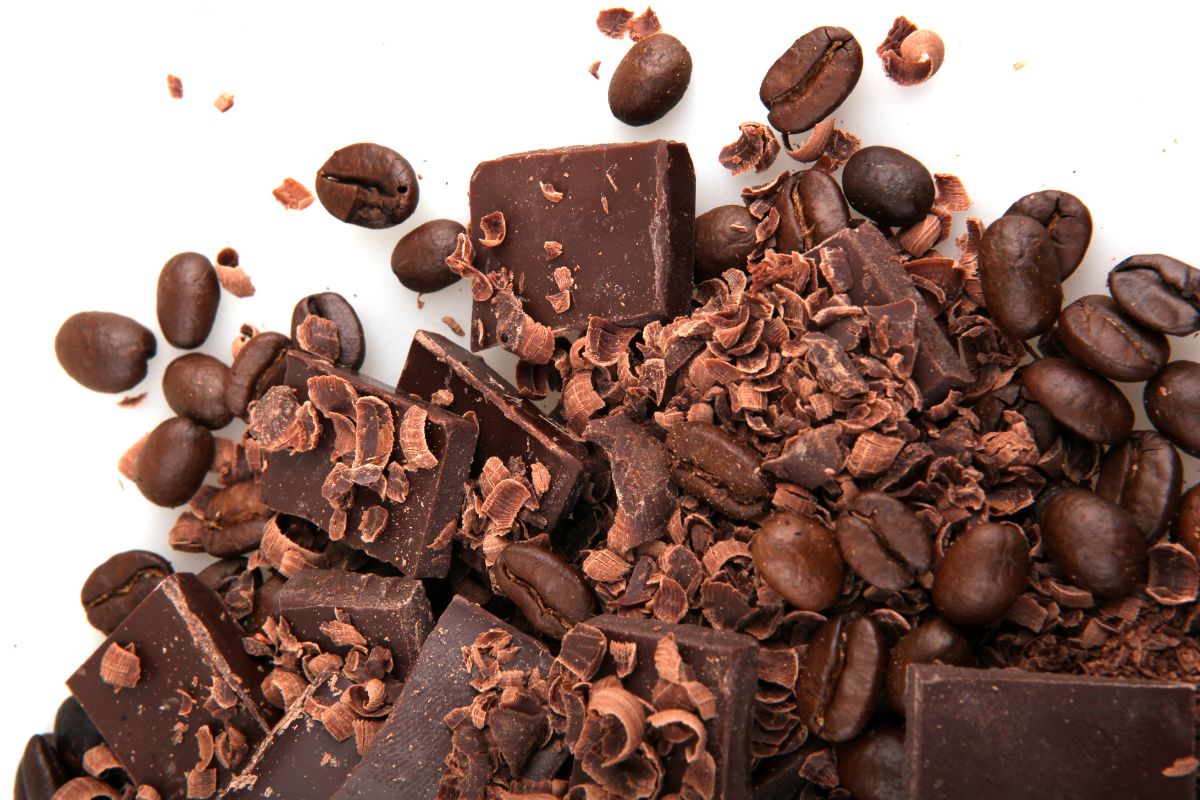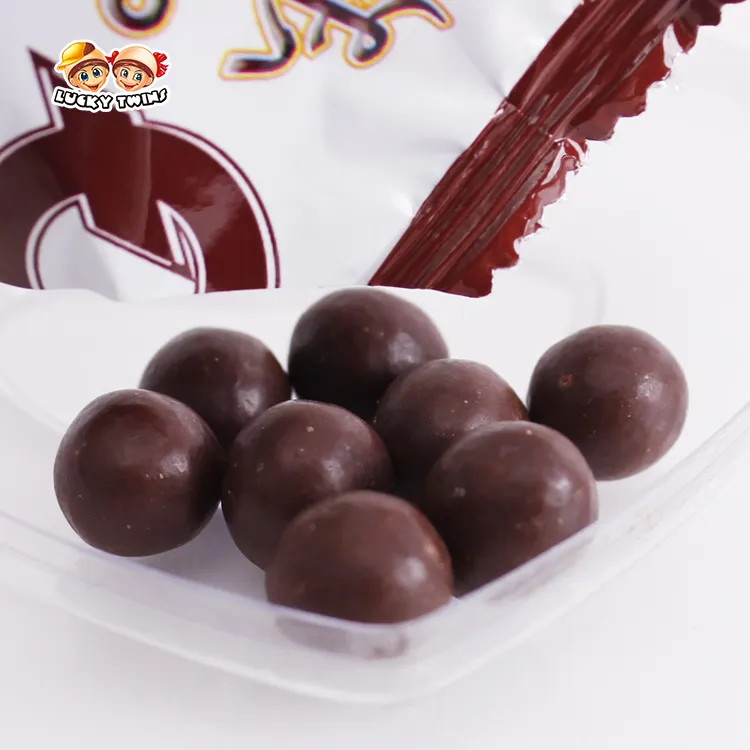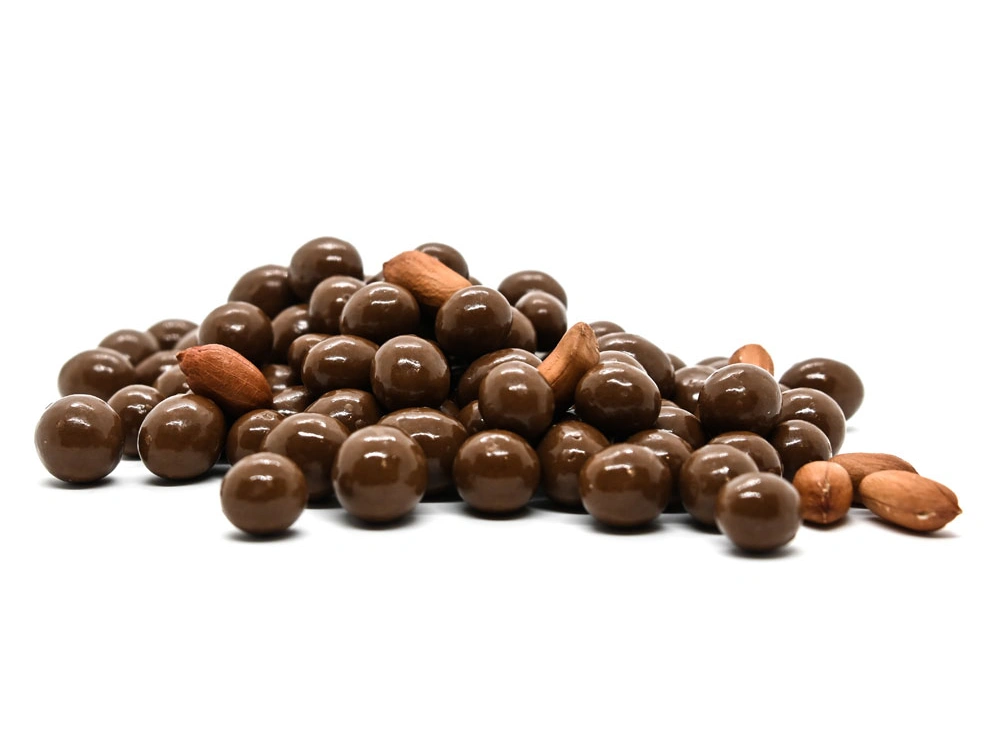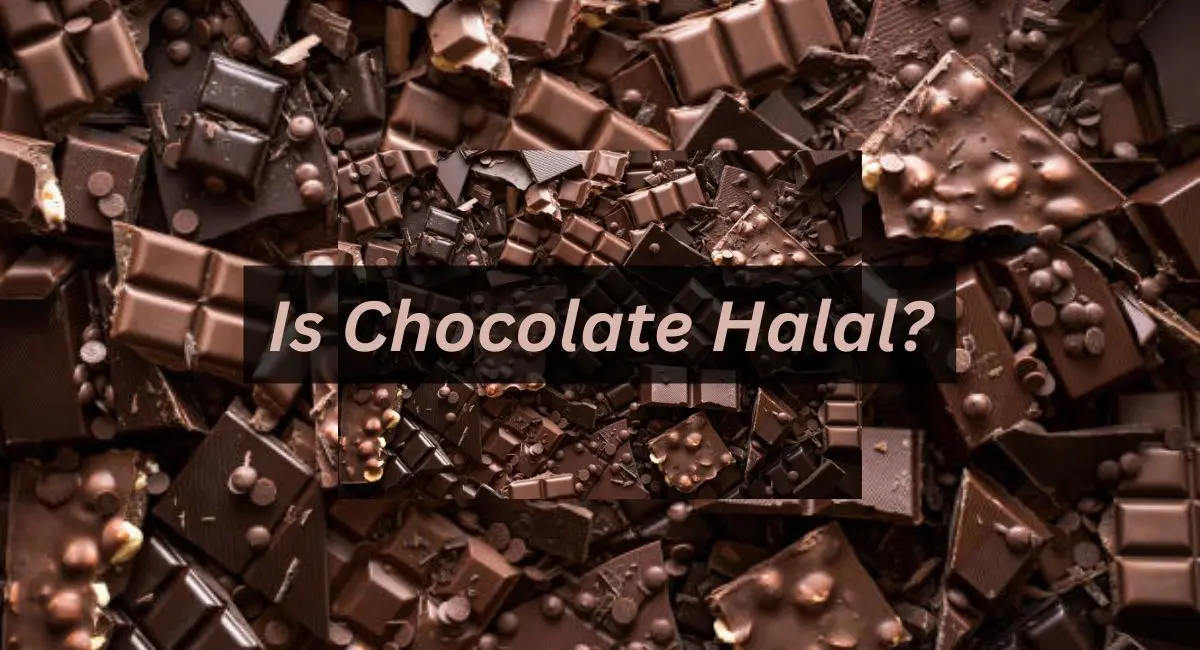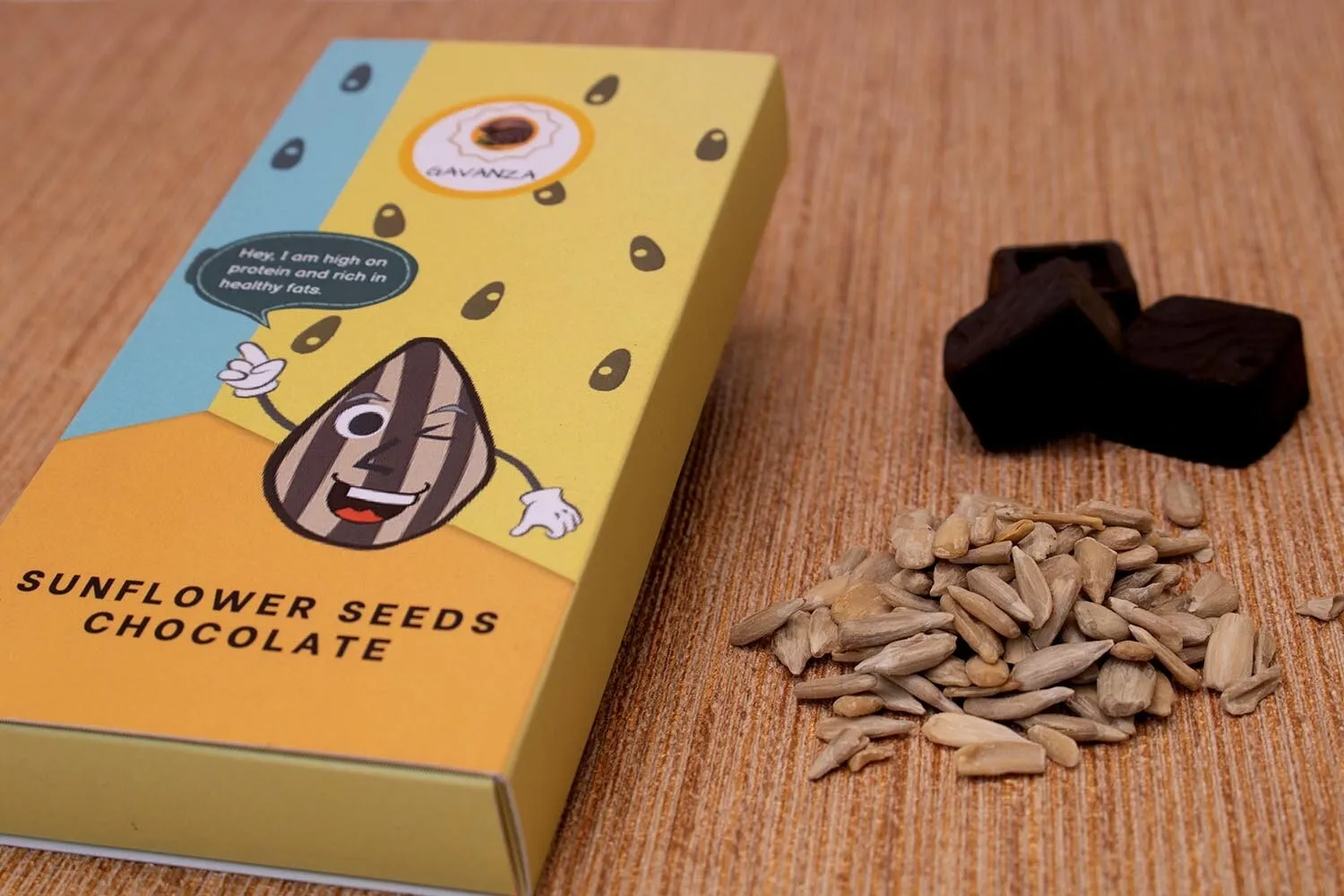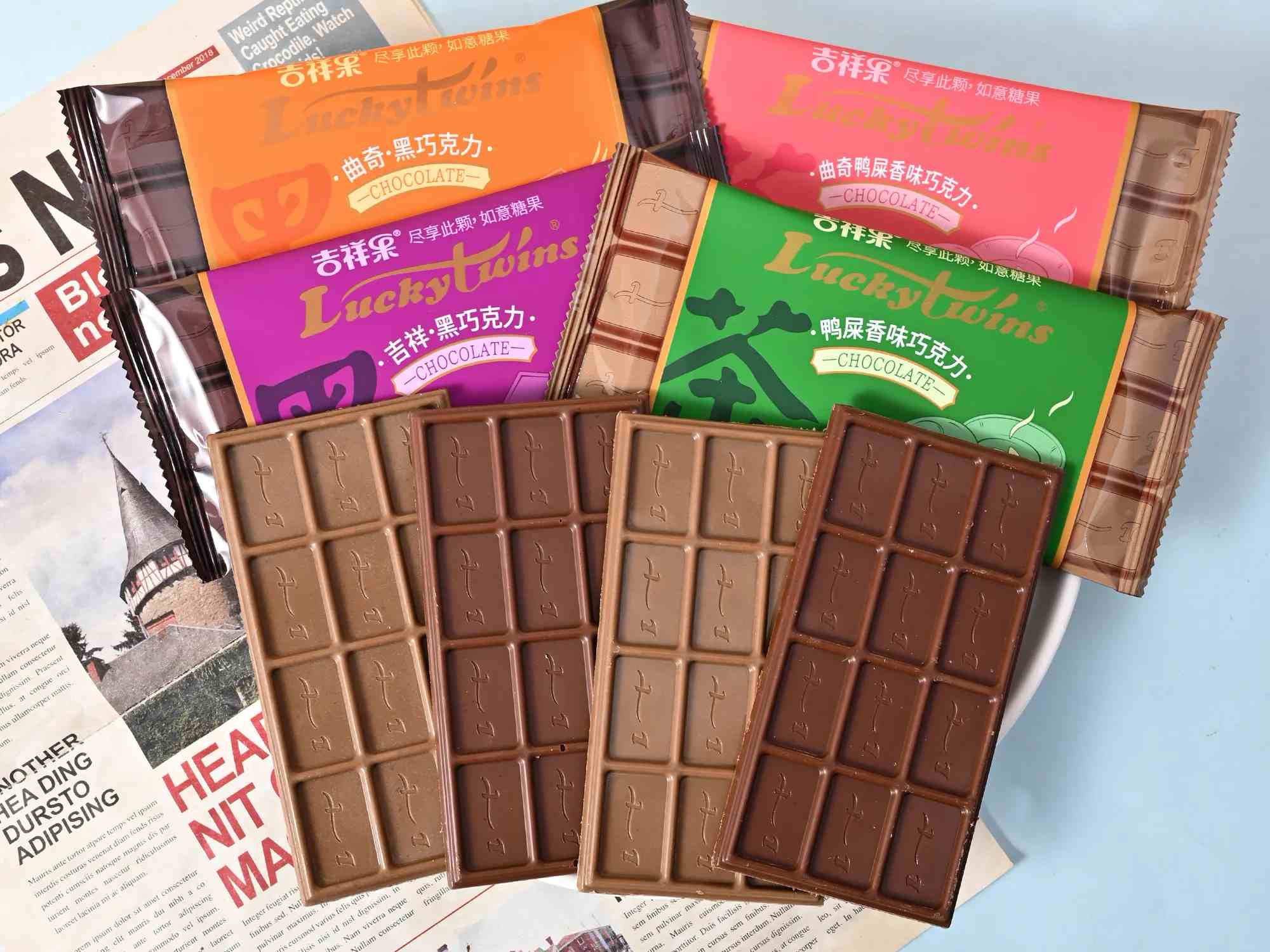대중적인 과자인 초콜릿은 풍부한 맛과 다양한 종류로 전 세계 수많은 팬을 사로잡고 있습니다. 초콜릿은 커피와 마찬가지로 향이 강합니다. 초콜릿에 카페인이 들어 있다는 사실을 알고 계셨나요? 초콜릿에 얼마나 많은 카페인이 들어 있는지 또한 많은 소비자들의 관심사가 되었습니다. 초콜릿 식품을 더 잘 선택하고 즐길 수 있도록 이 미스터리를 함께 풀어보겠습니다.
카페인이란 무엇인가요?
카페인은 크산틴 알칼로이드 계열에 속하는 자연 발생 화합물로 커피, 차, 코코아 콩, 과라나와 같은 식물에서 널리 발견됩니다. 일시적으로 졸음을 쫓고 에너지를 회복하는 중추신경계 자극제입니다.
카페인은 아데노신 수용체를 차단하고 아데노신의 진정 효과를 감소시키며 뉴런의 흥분성을 증가시킵니다. 이는 신경 전달을 촉진하여 주의력, 주의력, 반응 속도를 향상시킵니다. 카페인은 또한 도파민 분비를 증가시켜 즐거움을 가져다주고 동기 부여를 강화합니다.
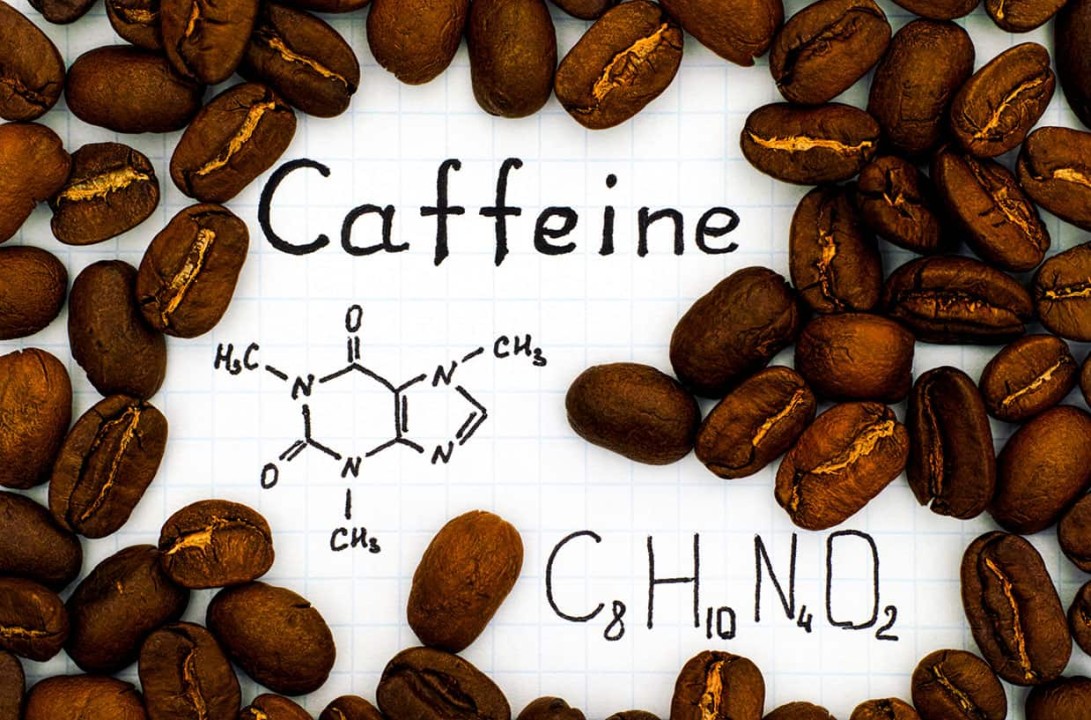
초콜릿에 카페인이 들어 있나요?
대답은 '예'입니다. 초콜릿의 주성분은 코코아 콩이므로 카페인이 함유되어 있습니다. 초콜릿에는 카페인이 있지만 그 함량은 상대적으로 낮고 커피 나 차만큼 분명하지 않습니다. 일반인의 경우 적당히 초콜릿을 먹어도 카페인 섭취에 큰 문제가 없지만 카페인에 민감한 사람은 여전히 소비량에주의를 기울여야합니다.
초콜릿에서 카페인은 어떻게 형성되나요?
초콜릿의 카페인은 주로 원재료인 코코아 콩에서 나옵니다. 코코아 콩에는 카페인과 테오브로민이 자연적으로 함유되어 있으며, 카페인은 코코아 콩의 로스팅, 껍질 벗기기, 분쇄 및 가열 과정에서 생성되는 코코아 고형물과 코코아 버터에서 발견됩니다. 이러한 성분은 그대로 유지되어 최종 초콜릿 제품에 함유됩니다.
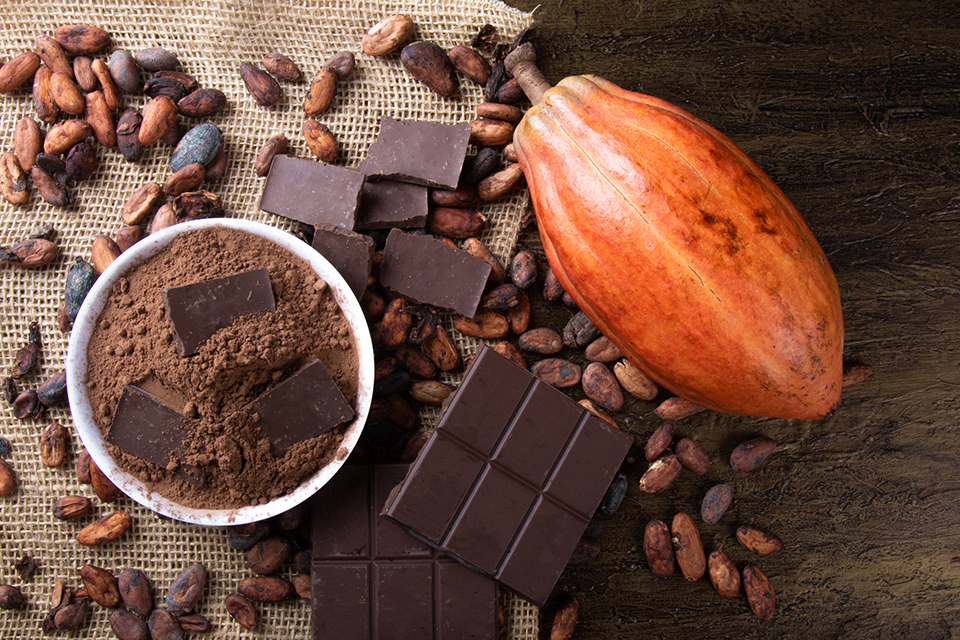
초콜릿의 카페인 함량은 얼마나 될까?
초콜릿의 카페인 함량은 초콜릿의 종류와 코코아 원두의 원산지에 따라 달라집니다. 일반적으로 초콜릿이 진할수록 카페인 함량이 높습니다. 초콜릿의 종류에 따라 카페인 함량에 영향을 줄 수 있는 성분의 비율이 다릅니다.
다크 초콜릿에 카페인이 들어 있나요?
모든 다크 초콜릿에 카페인이 함유되어 있다는 것은 의심의 여지가 없으며, 모든 초콜릿 종류 중 카페인 함량이 가장 높습니다. 이는 다크 초콜릿이 더 많은 코코아 고형물로 만들어지기 때문입니다. 하지만 그렇다고 해서 다크 초콜릿을 포기해야 한다는 뜻은 아닙니다. 카페인 함량이 가장 높은 초콜릿이긴 하지만 다크 초콜릿은 커피나 차에 비해 카페인 함량이 상대적으로 적습니다. 이에 비해 다크 초콜릿 한 서빙에는 일반 커피 한 잔의 카페인의 약 4분의 1이 들어 있습니다.
카페인에 특히 민감하다면 커피 한 잔으로 수면을 방해하지 않도록 밤보다는 낮에 다크 초콜릿을 즐겨보세요. 또한 다크 초콜릿은 심장 건강에 좋고 항산화제와 미네랄이 풍부한 것으로 알려져 있는 등 적당히 섭취하면 많은 이점이 있습니다.
미국 농무부는 초콜릿 1온스당 평균 카페인 함량을 다음과 같이 보고합니다:
70-85% 코코아를 함유한 다크 초콜릿에는 22.7mg의 카페인이 함유되어 있습니다.
45-60% 코코아를 함유한 다크 초콜릿에는 12.2mg의 카페인이 함유되어 있습니다.
밀크 초콜릿에 카페인이 있나요?
예, 밀크 초콜릿에도 카페인이 함유되어 있지만 다크 초콜릿보다 카페인 함량이 훨씬 적습니다. 밀크 초콜릿의 부드럽고 크리미한 맛은 코코아와 분유를 섞어서 만들어집니다. 우유의 비율은 코코아의 비율을 줄여 카페인 함량을 줄입니다.
미국 농무부에 따르면 1온스당 카페인 함량은 다음과 같습니다:
밀크 초콜릿 1온스에는 5.6mg의 카페인이 함유되어 있습니다.
화이트 초콜릿에 카페인이 들어 있나요?
화이트 초콜릿에는 카페인이 0mg 함유되어 있지 않습니다. 이는 다른 초콜릿과 성분이 약간 다르기 때문입니다. 화이트 초콜릿은 코코아 버터, 분유, 설탕, 바닐라로 만들어집니다. 코코아 버터는 카페인이 함유되어 있지 않은 코코아 콩의 일부입니다.
여러분도 그런 질문이 있으실 것 같습니다: 화이트 초콜릿도 초콜릿으로 간주되나요? 일부 초콜릿 애호가와 순수주의자들은 코코아 고형물이 함유된 제품만 진짜 초콜릿이라고 부를 수 있다고 믿습니다. 따라서 그들은 화이트 초콜릿을 진짜 초콜릿으로 간주하지 않습니다. 다른 사람들은 제품에 코코아 콩에서 추출한 성분(예: 코코아 버터)이 포함되어 있으면 초콜릿의 일종으로 간주할 수 있다고 생각합니다. 따라서 그들은 화이트 초콜릿을 초콜릿의 일부로 받아들입니다.
미국과 유럽 등 많은 국가에서 화이트 초콜릿은 최소 20%의 코코아 버터, 14%의 유지방, 3.5%의 유지방이 함유된 경우 초콜릿의 한 종류로 정의됩니다. 이 규정에 따르면 화이트 초콜릿은 초콜릿의 기준을 충족합니다. 법적 및 현대 미식의 관점에서 볼 때 화이트 초콜릿은 여전히 초콜릿으로 간주됩니다.

국가별 카페인 함량
날씨, 토양, 고도가 원두의 성분에 영향을 미칠 수 있기 때문에 코코아 원두의 산지가 카페인 함량에 큰 영향을 미칩니다. 이 연구에서는 26개국에서 200개의 코코아 원두 샘플을 채취했습니다. 다음은 몇 가지 일반적인 결론입니다:
- 에콰도르, 베네수엘라, 페루산 코코아에서 카페인 함량이 가장 높습니다.
- 카페인 함량이 가장 낮은 코코아는 가나, 코트디부아르, 멕시코산 코코아에서 발견됩니다.
- 카리브해와 남미에서 재배되는 코코아는 일반적으로 아프리카에서 재배되는 코코아보다 카페인 함량이 더 높습니다.
또 다른 흥미로운 사실은 코코아 원두를 볶아도 카페인 함량에 영향을 미치지 않으며 커피 원두를 볶을 때도 마찬가지라는 것입니다.
초콜릿, 커피, 차의 카페인 함량 비교
초콜릿, 커피, 차의 카페인 함량은 사용된 재료와 제조 방법에 따라 달라집니다. 다음은 다양한 초콜릿, 커피, 차의 카페인 함량을 비교한 표로 보다 직관적인 이해를 돕습니다:
| 음식/음료 | 1인분 제공량 | 카페인 함량(mg) |
| 다크 초콜릿 | 온스당(약 28g) | 12 |
| 밀크 초콜릿 | 온스당(약 28g) | 3-6 |
| 화이트 초콜릿 | 온스당(약 28g) | 0 |
| 드립 커피 | 컵당(8온스/240ml) | 95 |
| 에스프레소 | 1회 제공량(1온스/30ml) | 63 |
| 홍차 | 컵당(8온스/240ml) | 40-70 |
| 녹차 | 컵당(8온스/240ml) | 20-45 |
| 백차 | 컵당(8온스/240ml) | 15-30 |

소비자를 위한 조언 및 팁
카페인 섭취량 파악하기
초콜릿의 카페인 함량은 비교적 낮지만 과다 섭취하면 카페인의 누적 효과가 발생할 수 있습니다. 일일 카페인 총 섭취량에 주의를 기울이고 여러 경로를 통해 카페인을 과도하게 섭취하지 않도록 주의하세요. 초콜릿 제품을 구매할 때는 포장에 표시된 성분 및 영양 성분 표시를 읽고 각 초콜릿의 카페인 함량을 파악하세요.
필요에 따라 초콜릿 선택하기
카페인에 민감하거나 카페인 섭취를 줄여야 하는 소비자라면 코코아 함량이 낮은 화이트 초콜릿이나 밀크 초콜릿을 선택하는 것이 좋습니다. 기분 전환이 필요한 상황이라면 다크 초콜릿을 선택할 수 있습니다. 카페인 함량은 커피보다 낮지만 상쾌한 느낌을 주는 효과가 있습니다.
신체 반응에 주의
사람마다 카페인에 대한 내성이 다르므로 자신에게 맞는 초콜릿의 종류와 양을 찾는 것이 중요합니다. 특히 카페인에 민감한 사람은 다양한 종류의 초콜릿에 대한 자신의 반응을 관찰하세요. 두근거림, 불안, 불면증과 같은 불편한 증상이 나타나면 섭취량을 줄이거나 디카페인 식품을 선택해야 합니다.
특별한 날을 위한 선택
집중력과 효율성을 유지해야 하는 업무 환경에서는 다크 초콜릿을 간식으로 선택하여 적당히 즐길 수 있습니다.
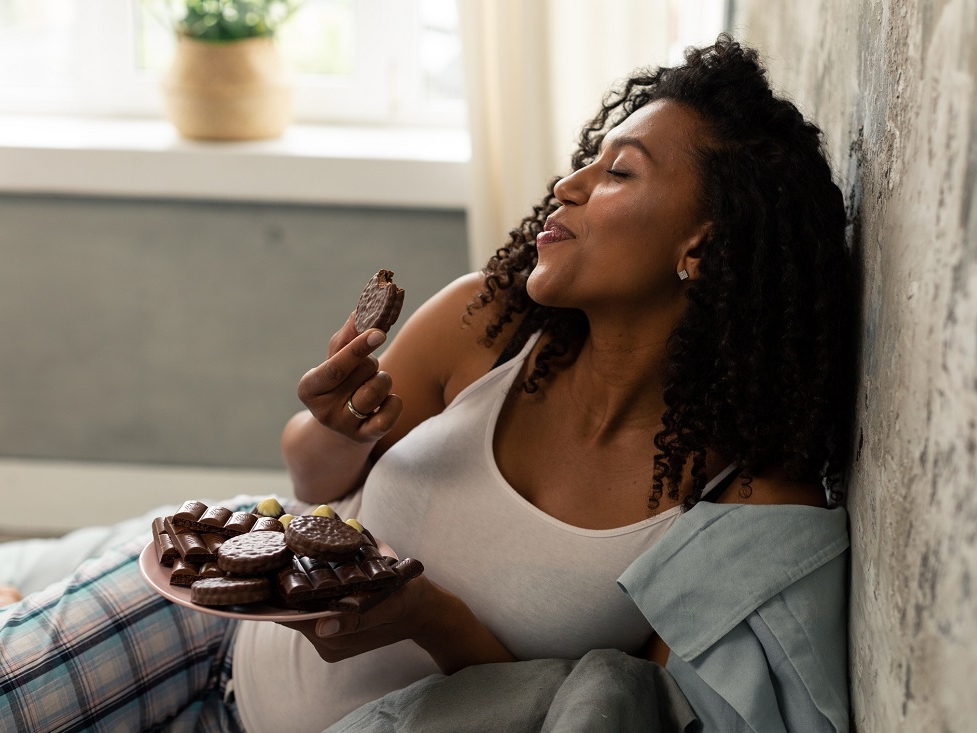
결론
초콜릿은 맛있는 간식일 뿐만 아니라 카페인 함량과 다양한 맛으로 많은 사람들의 관심을 받고 있습니다. 다크 초콜릿의 진한 향, 밀크 초콜릿의 부드러운 맛, 화이트 초콜릿의 순수한 우유 향 등 각 초콜릿은 고유한 매력과 적합한 소비 시나리오를 가지고 있습니다. 초콜릿의 카페인 함량을 이해하고 자신에게 맞는 초콜릿 종류를 선택하면 카페인 과다 섭취로 인한 잠재적 위험을 피하면서 초콜릿의 진미를 더 맛있게 즐길 수 있습니다.
이를 기반으로 합니다, 행운의 과일 혁신적인 맞춤형 초콜릿 스낵 서비스. 전통적인 다크 초콜릿, 부드러운 밀크 초콜릿, 순수한 화이트 초콜릿 또는 새로운 말차 초콜릿을 선호하든, 필요에 따라 조정하고 맞춤화할 수 있습니다. 동시에 맞춤형 포장 디자인도 제공하므로 초콜릿 스낵이 맛있을 뿐만 아니라 브랜드의 독특한 개성과 취향을 반영할 수 있습니다.
행운의 과일 초콜릿 코팅 스낵 제품 도매 라인에는 다음이 포함됩니다. 초콜릿 덮인 해바라기 씨, 초콜릿 코팅 땅콩, 초콜릿 크런키 볼, 초콜릿 구미 및 초콜릿 터지는 사탕등 어린이와 어른 모두에게 완벽한 초콜릿 스낵은 파티 간식이나 애프터눈 티 간식으로 훌륭한 선택입니다. 맞춤형 초콜릿 코팅 스낵을 대량으로 선택하여 모든 시식을 독특하고 즐거운 경험으로 만들어 보세요. B2B 구매자의 대량 구매를 적극 환영합니다!

